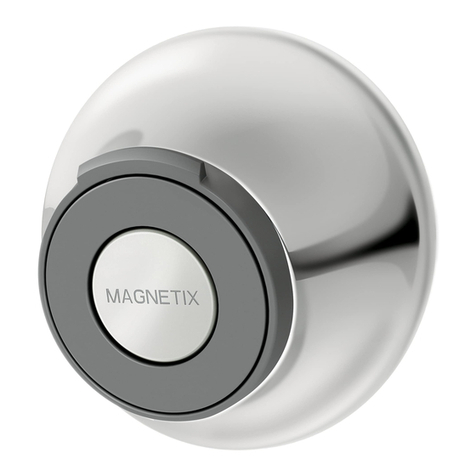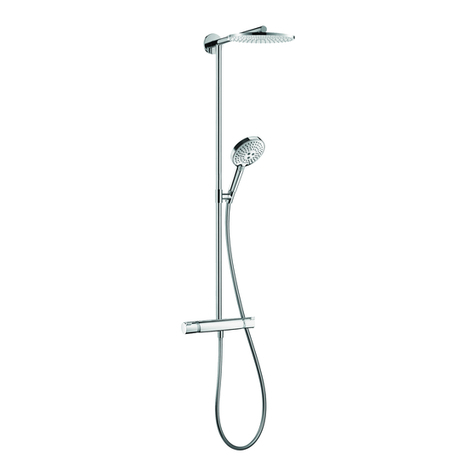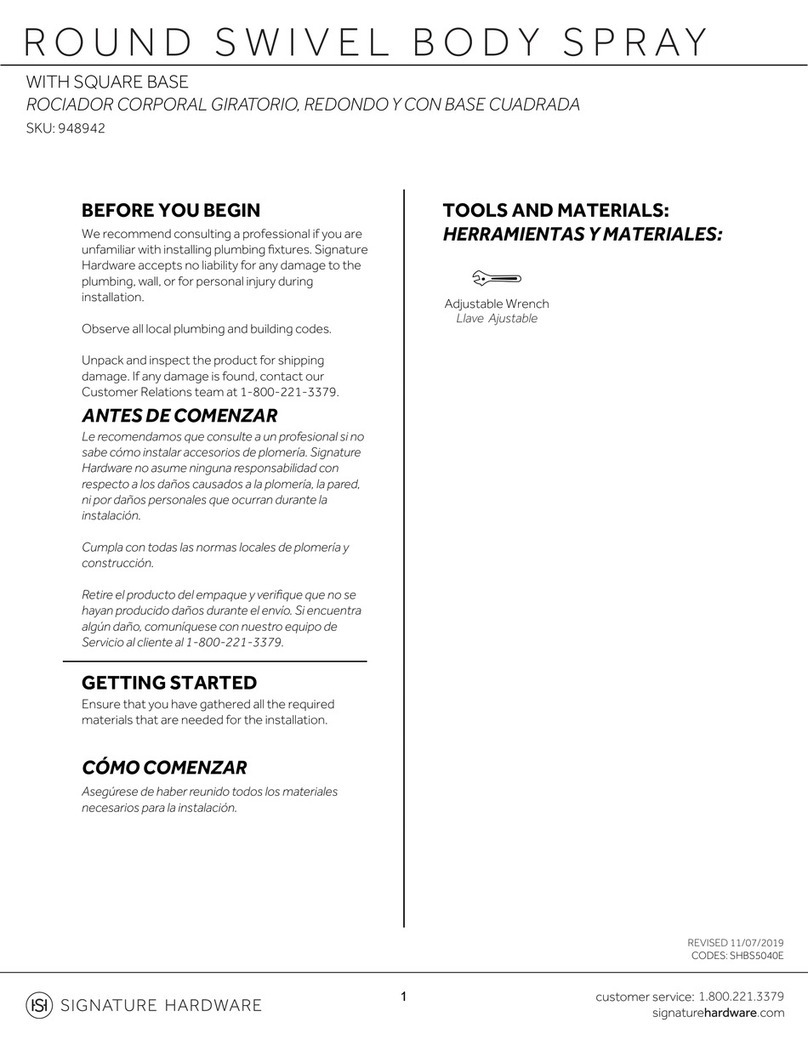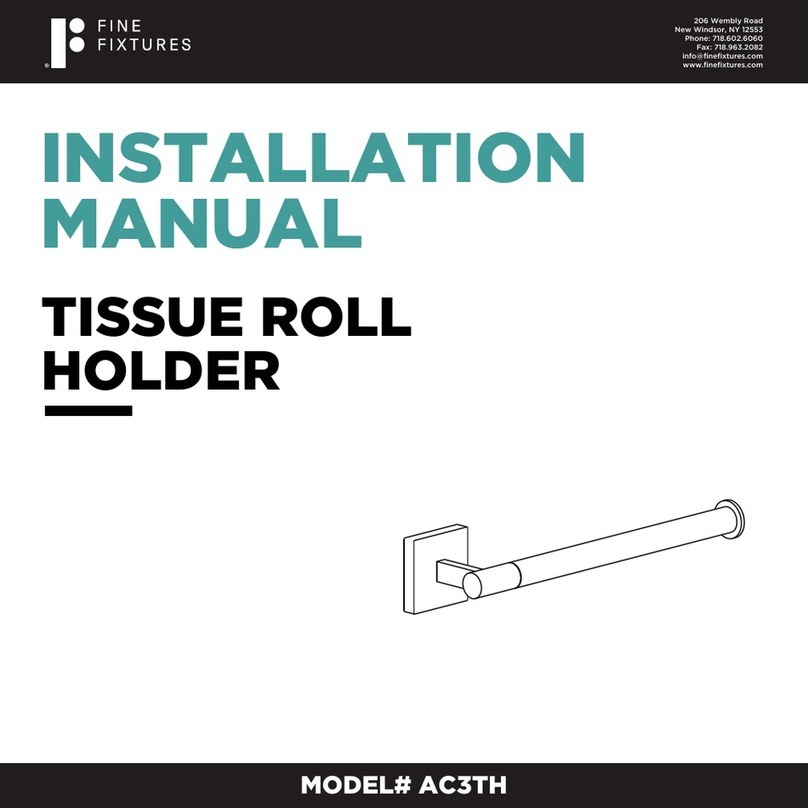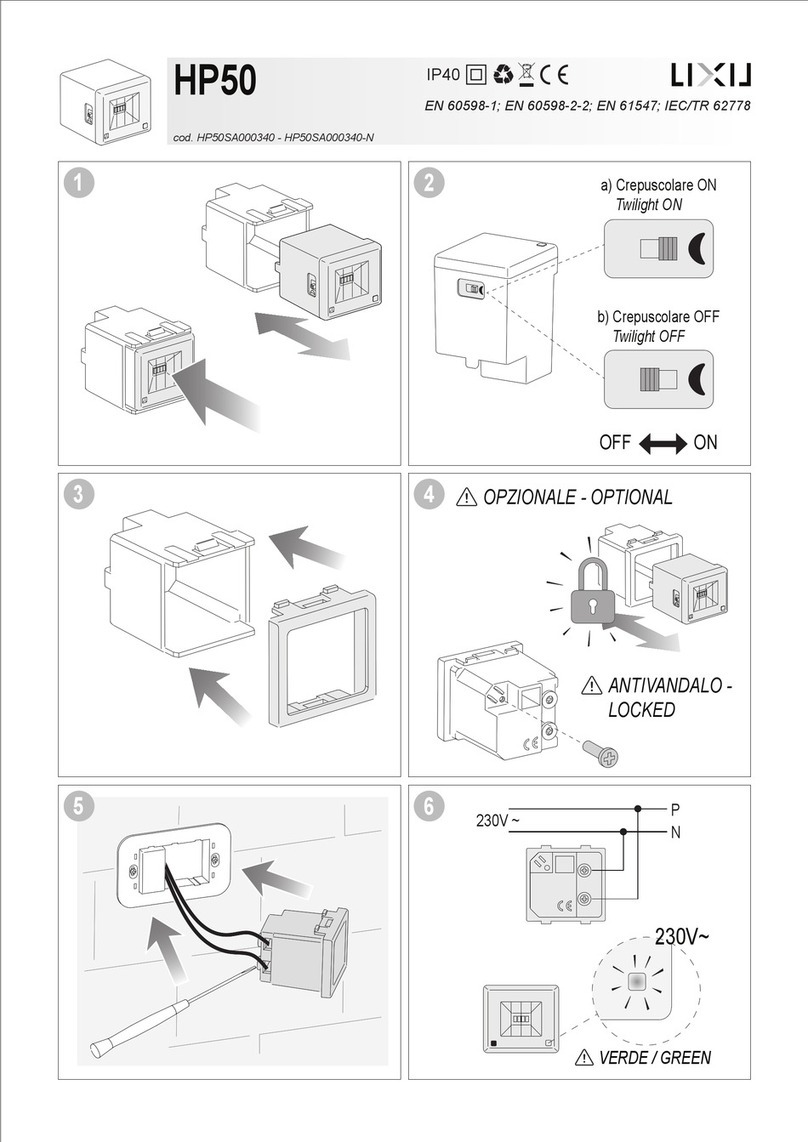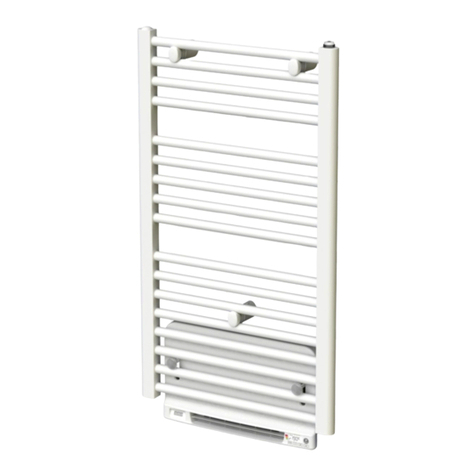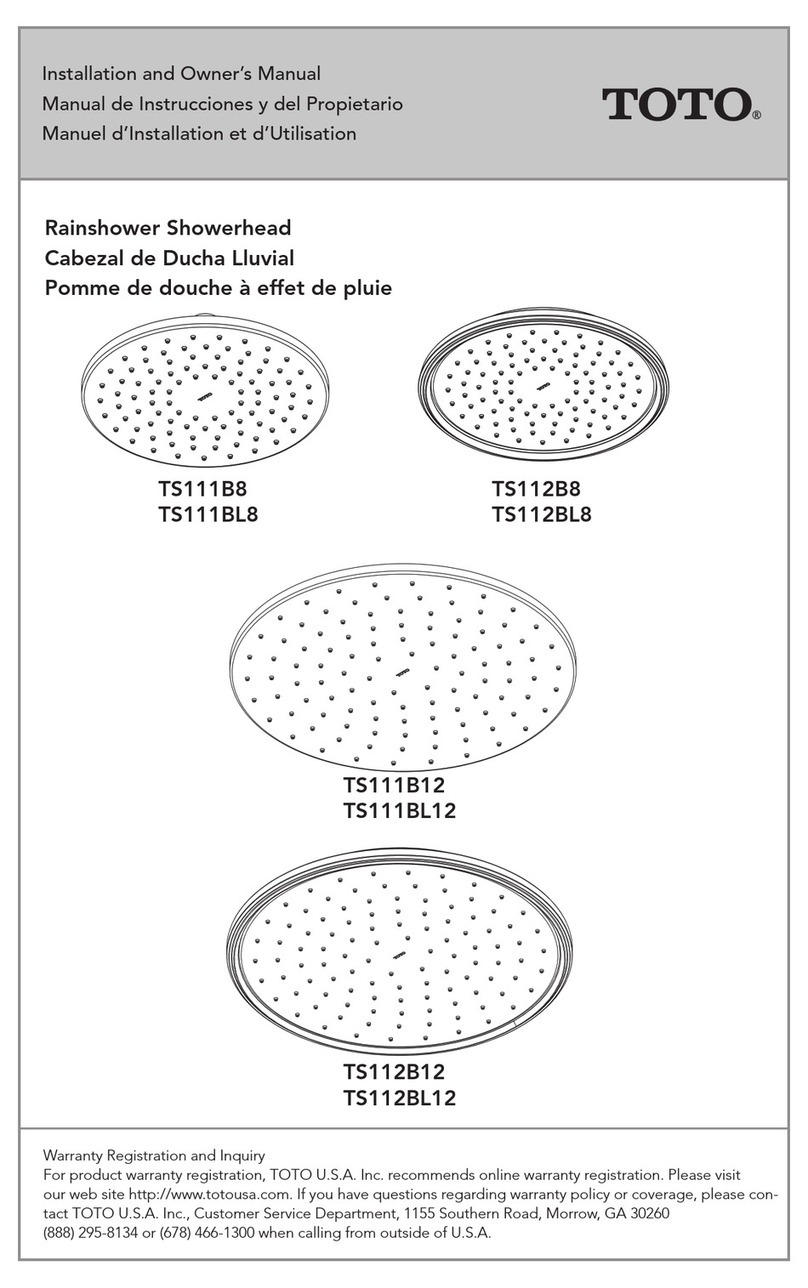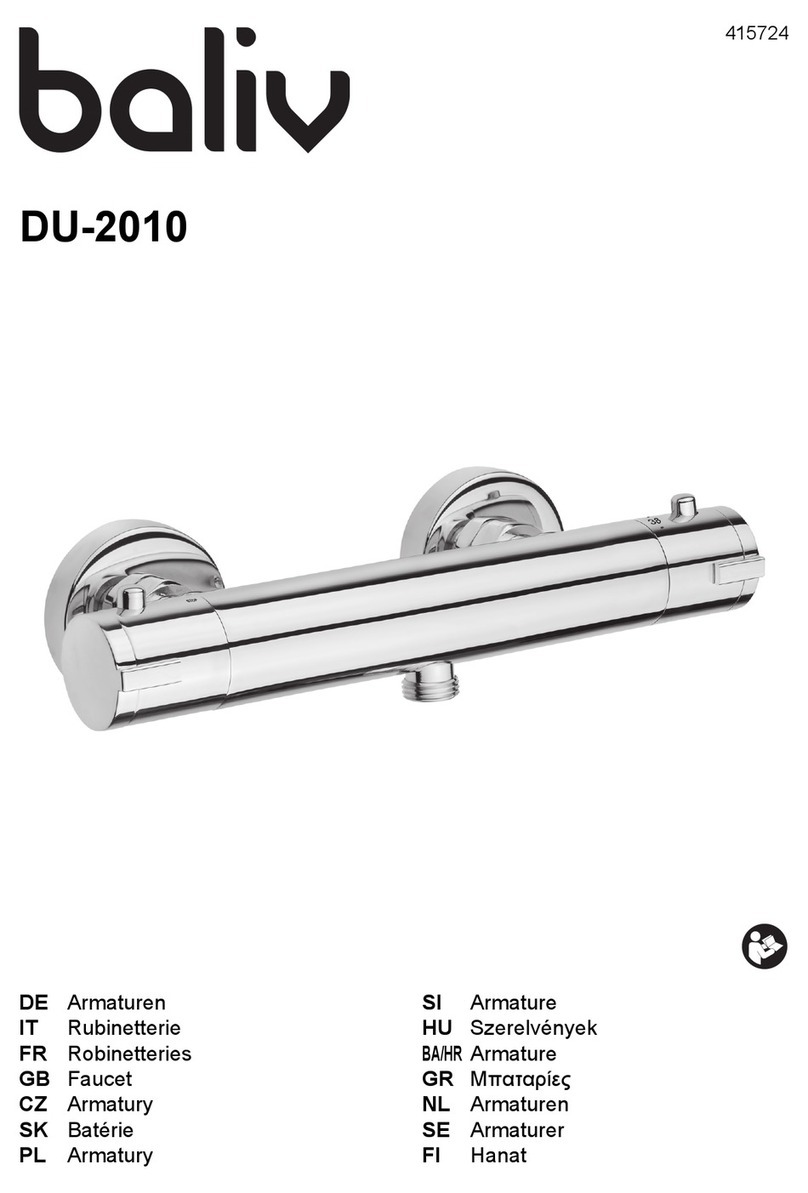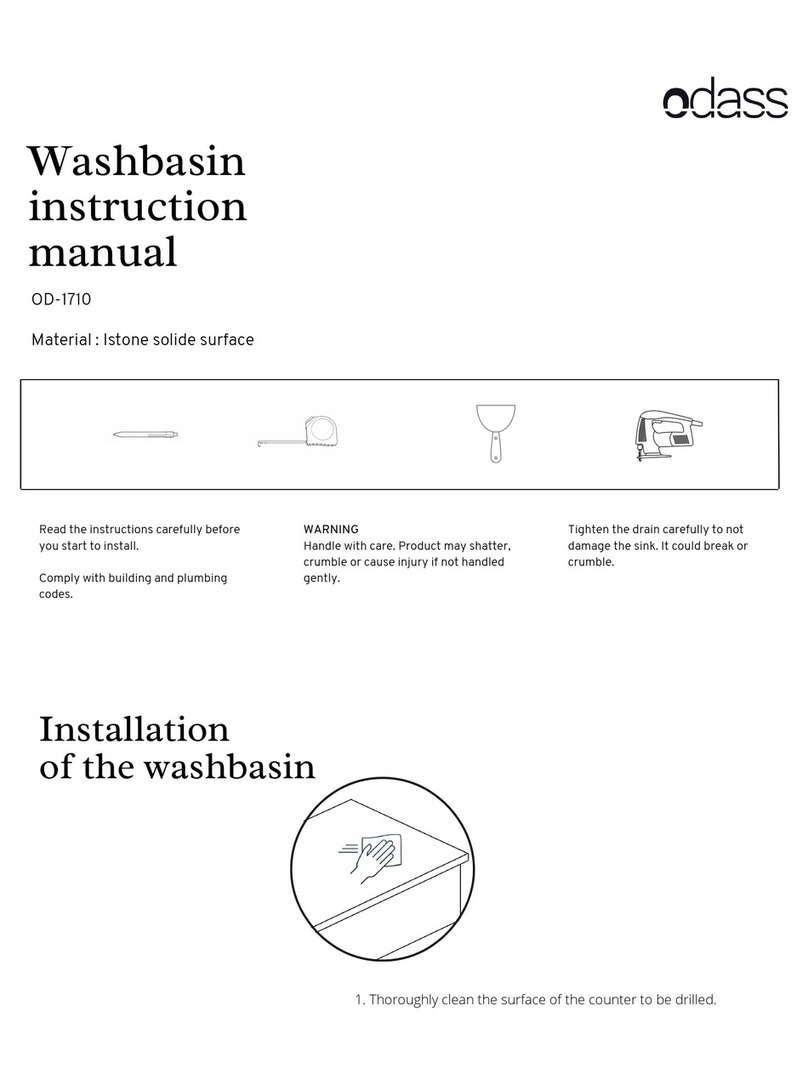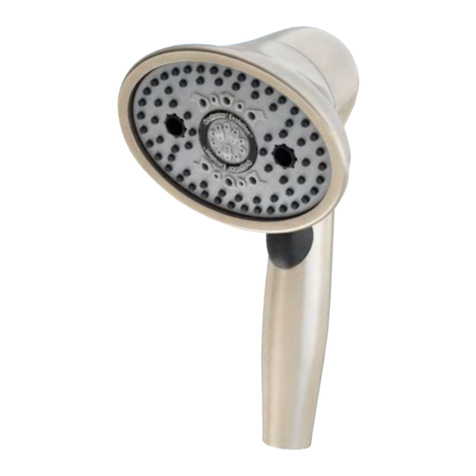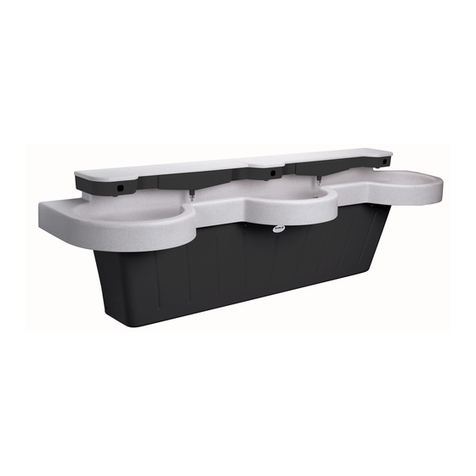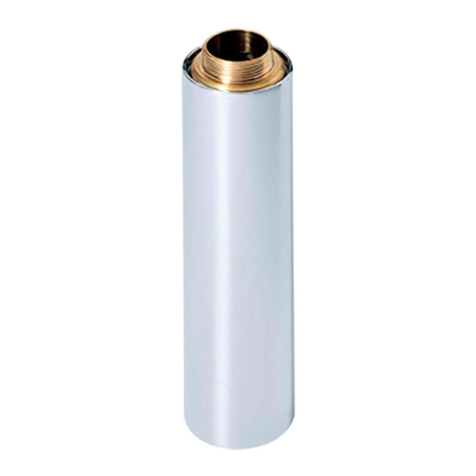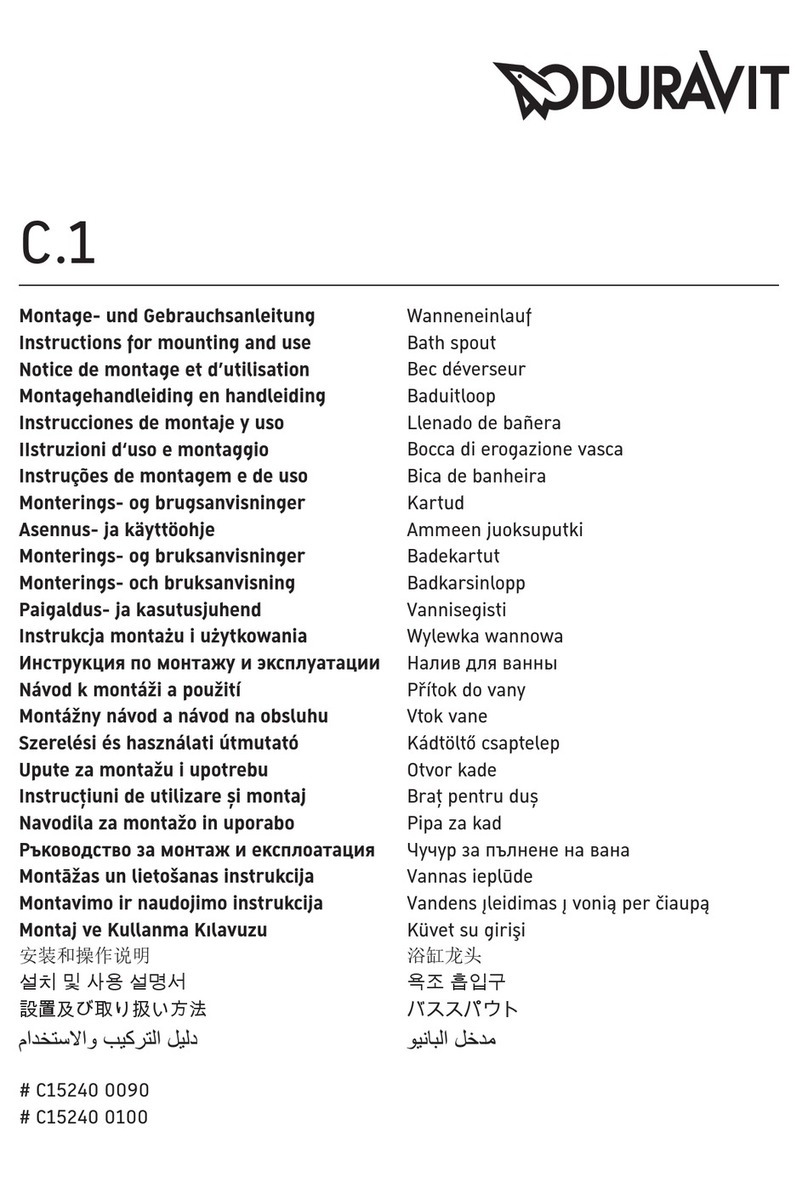
3
Installation / Montage des Badheizkörpers
D
Die Installation und Inbetriebnahme Ihres Badheizkörper ist von einer zuge-
lassenen Fachfirma durchzuführen. Bei der Installation sind die einschlägigen
Normen bzw. die nationalen elektrotechnischen Sicherheitsvorschriften, wie
ÖVE- und VDE Bestimmungen zu beachten.
Bei der Montage von Heizkörpern ist zu beachten, dass die Befestigung von
Heizkörpern so dimensioniert wird, dass sie für die bestimmungsgemäße
Verwendung und vorhersehbarer Fehlanwendung geeignet ist.
Hierbei sind insbesondere die Verbindung mit dem Baukörper sowie dessen
Beschaffenheit, die Geeignetheit des Montagezubehöres und die möglichen
Belastungen nach erfolgter Montage zu prüfen.
*Entsprechend der Europäischen Norm EN 60335-2-43+A1:2006-10-01:
WARNHINWEIS: Zur Vermeidung einer Gefährdung für sehr junge Kinder wird
empfohlen dieses Gerät so zu installieren, dass sich die unterste beheizte
Stange mindestens 600 mm über dem Fußboden befindet.
Unter Berücksichtigung der geometrischen Maße des Heizkörpers und der
Anschlusselemente (Armatur oder Ventile, Verschraubungen) ist die Ver-
rohrung vorzubereiten siehe (Abb. 1 bzw. Abb. 3).
Wir empfehlen, einen seitlichen Mindestabstand zum Heizkörper von 100 mm
einzuhalten. Dabei ist Nachfolgendes zu berücksichtigen:
Wird ein Elektroheizelement verwendet, kann dieses in eine der beiden 1/2“
Muffen Ieingedichtet werden (Abb. 3). Dabei sind die Hinweise der Montage-
anleitung für das Elektroheizelement zu beachten.
Die nicht verwendeten Anschlüsse mit den beigepackten Stopfen verschlie-
ßen, wobei in eine der beiden Muffen II die 1/2“ Entlüftung zu montieren ist.
Beim seitlichen Anschluss, der sich auf der rechten oder linken Seite des
Heizkörpers befinden kann, ist der Vorlauf oben und der Rücklauf unten
anzuschließen (Abb. 1).
WANDMONTAGE:
Anreißen, Bohren der Löcher A bzw. B - Bohrer Ø10 - und Setzen der Dübel
entsprechend dem Bohrbild (Abb. 1).
Befestigung der Wandfüße 5und waagrechtes Ausrichten derselben, wobei
die versenkten Langlochbohrungen 4nach unten stehen.
Dabei sollen die Wandmontageschrauben 6mit Beilagescheiben in der Mitte
der Langlöcher 9der Wandfüße montiert werden.
Lockeres Anziehen der Montagestutzen 2und Klemmteil 1zwischen den
horizontalen Rohren des Heizkörpers mit der Kreuzschlitzschraube 3.
Die am Heizkörper vormontierten Montagestutzen 2werden in die Wandfüße
5gesteckt und mittels Linsenkopfschraube 7locker miteinander verbunden.
Durch das versenkte Langloch im Wandfuß kann der Wandabstand variiert
und der Heizkörper vertikal ausgerichtet werden. Festziehen der Kreuzschlitz-
schraube 3und der Linsenkopfschraube 7, Abdeckkappen 8aufstecken.
Verstellmöglichkeiten der Wandfüße in Bauhöhenrichtung ist durch das
Langloch 9im Wandfuß gegeben, sollten die hydraulischen Anschlüsse nicht
genau passen.
Durch die vorhandenen Rohrleitungen des zu tauschenden Heizkörpers ist
der Wandabstand der Anschlüsse (Vorlauf und Rücklauf) vorgegeben.
Der Wandabstand kann mittels Montagestutzen 2an die vorhandenen Rohr-
leitungen, in der Bautiefe angepasst werden (Abb. 2).
Heizkörper hydraulisch anschließen.
Folgende Normen sind bei der Montage der Heizkörper
unbedingt einzuhalten:
- DIN 55900: Sprühbereich in Nassräumen
- VDI 2035: Vermeidung von Schäden in Warmwasserheizungsanlagen
- DIN 18017 Teil 3: Lüftung von Bädern und Toiletten ohne Fenster
- EN 14336: Heizungsanlagen in Gebäuden, Installationen und Abnahme
der Warmwasserheizungsanlagen
Die Badheizkörper sind geeignet für Warmwasserzentralheizungen mit einer
max. Betriebstemperatur von 110 °C und einem max. Betriebsüberdruck von
10 bar.
Der gleichbleibende hohe Qualitätsstandard unterliegt einer laufenden Eigen-
und Fremdüberwachung. Nacharbeiten am Heizkörper (z.B. Schweißarbeiten)
durch den Kunden sind nicht erlaubt.
Die Badheizkörper können auch mit einer Elektrozusatzheizung ausgestattet
werden, wobei die nachfolgenden Empfehlungen einzuhalten sind:
Heizkörperdimension
Baulänge x Bauhöhe Elektroheizelement
Badheizkörper WeldOn Sanierung
[mm]
bei 60 °C
[W]
714 x 400 -
714 x 500 300
714 x 600 300
714 x 750 300
714 x 900 300
1134 x 400 300
1134 x 500 300
1134 x 600 300
1134 x 750 600
1134 x 900 600
1764 x 400 600
1764 x 500 600
1764 x 600 600
1764 x 750 900
1764 x 900 900
Das Wandmontagekonzept ist ein auf fertige Wände konzipiertes System.
Heizkörperbeschreibung
D
Die Badheizkörper sind hochwertige Produkte, die nicht nur der Raumheizung
dienen, sondern die auch zur Trocknung von Handtüchern geeignet sind.
Daher ist zu beachten, dass sie heiße Oberflächen besitzen. Es dürfen nur
Textilien, die mit Wasser gewaschen wurden, getrocknet werden.
Selbstverständlich ist es unzulässig, diesen Heizkörper als Kletter- oder
Sportgerät zu benutzen.
Zur Reinigung der Heizkörperoberflächen sind schonende, nicht scheuernde
Reinigungsmittel zu verwenden.
Für den Fall des Elektroheizungsbetriebes muss die Heizwasserausdehnung
immer bis zum Expansionsgefäß gewährleistet sein, z. B. durch Öffnen des
Rücklaufventiles. Um Wärmeverschleppungen in das Heizungsnetz zu ver-
meiden, wird in diesem Fall empfohlen, das Thermostatventil zu schließen.
Selbstverständlich darf die Elektroheizung nur in Betrieb genommen werden,
wenn der Heizkörper komplett mit Heizungswasser gefüllt ist.
Wird der Heizkörper elektrisch betrieben, darf er aus sicherheitstechnischen
Gründen nicht komplett abgedeckt werden.
Bedienung und Pflege
D

